The mystery quilt that has taken over my free time
As a weaver, who also spins her own yarn, quilting always seemed to be lurking in the background, sneaking up on me. I find any art medium that include complex, meditative and/or time-consuming processes fascinating. Stitching on old, soft fabrics is especially soothing to my soul.
I am the daughter, granddaughter, niece, and great niece of many quilters. I have two shelves full of hand-stitched quilts, all made by female relatives. We use the quilts on beds when we can, but some of them are in such a fragile state, I hesitate to use them too often.
Not too long ago, because the grand children were spending the weekend with us, I retrieved a very tattered quilt from the closet. My seven year old grandson claimed this quilt as his own. I pointed out that it needed a lot of mending, and he confidently told me that I could fix it for him.
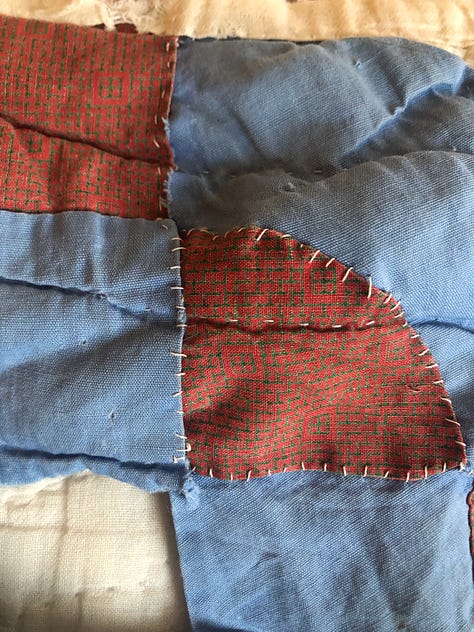
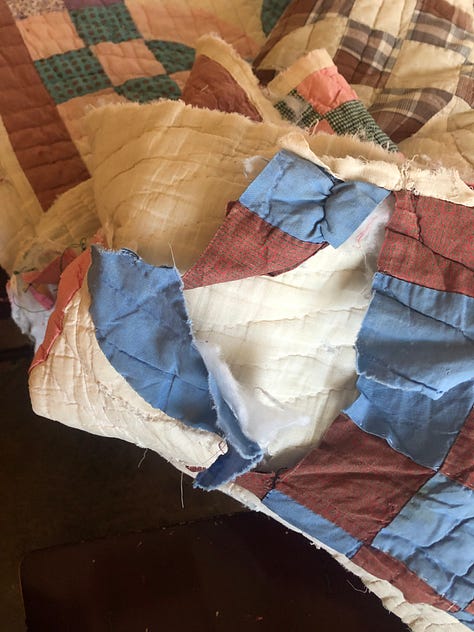
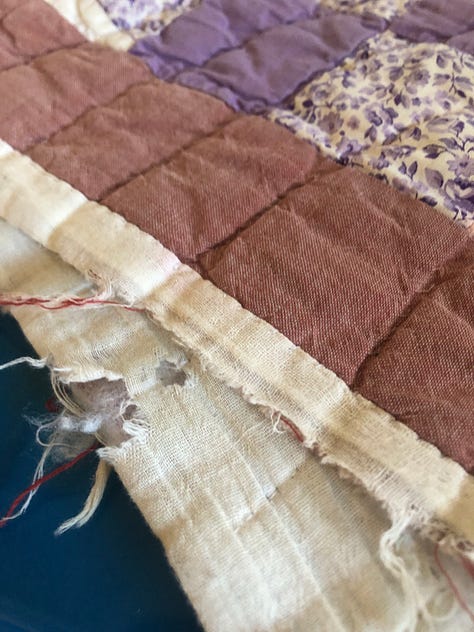
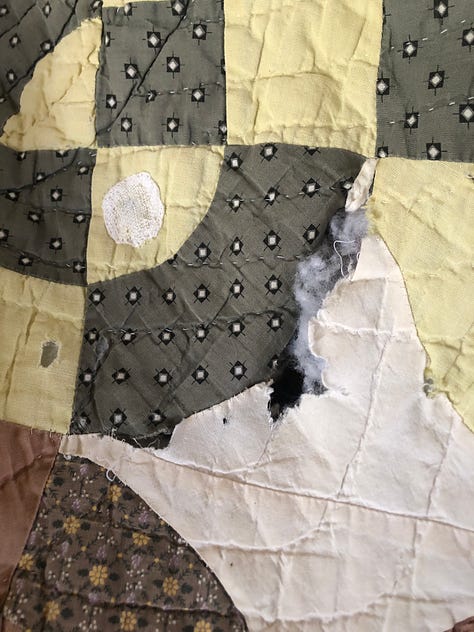
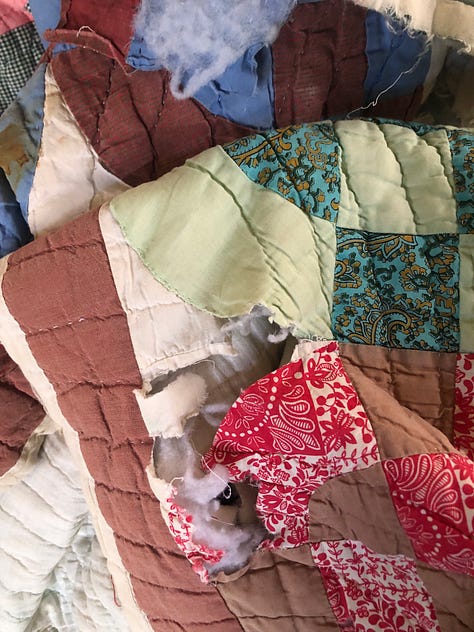
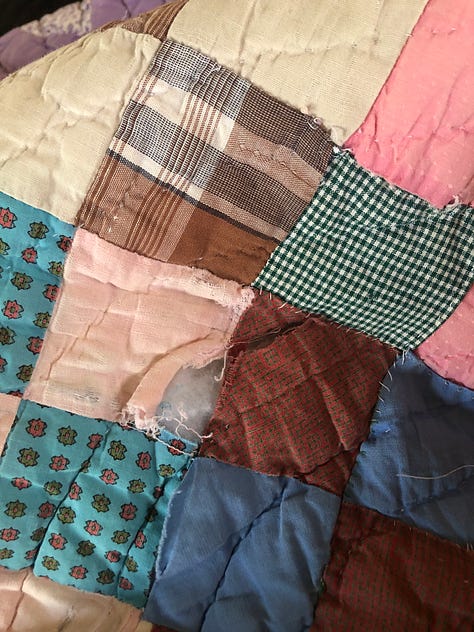
I am not certain how this quilt came to be in my house. The entire top is hand stitched, all the curved shapes, every corner, stitched with the tiniest stitches. Unlike every other family quilt, it has thin poly-fill batting (instead of hand-carded cotton) which indicates that the final steps may have been completed since the 1970s. I suspect it was one of the last quilts made by one of my aunties. There is evidence that it may have been used for pet bedding, or furniture moving at one time. 1
The color choices lead me to believe that the original quilter was not buying color co-ordinated fat quarters at Hancock Fabric Store. In fact, the fabric look very much like those found on Depression Era quilts pieced by my Granny and Great Aunts. Some of the blocks have been cobbled together in such a way that leads me to believe that it was made from clothes that had out lived their wearability.
Mending as meditation
Early in November 2024, I grew weary of the news and picked up my grandson’s quilt. I recognize that I can’t do much about the world woes, but I could start mending this ragged quilt. I work on it in the morning, while the sunlight is strong in my kitchen windows. This not only keeps me from starting the day on social media, it also gives my alway-demanding indoor cats a chance to snuggle up. I have found it to be deeply satisfying to link-up seams that parted ways years ago, tucking in the stray bits of poly-fill. 2
Not the first time stitching won out over weaving and spinning
A few years ago, I spent a lot of time hand stitching celebratory bunting (for my kids, nieces and nephews) from deconstructed baby dresses, which then morphed into tiny quilt books. All this was under the inspiration of Mandy Patullo. She uses old quilts and fabric ephemera to create thoughtful, playful and charming works of art.
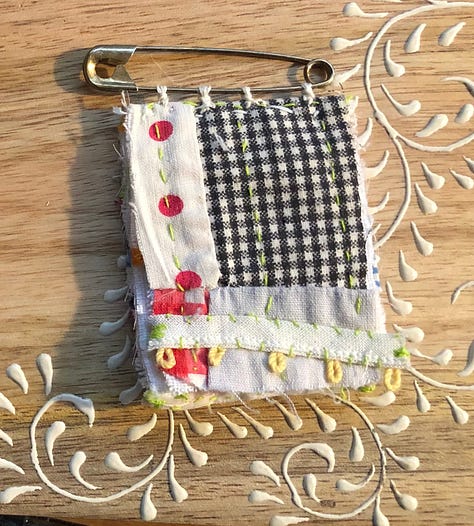
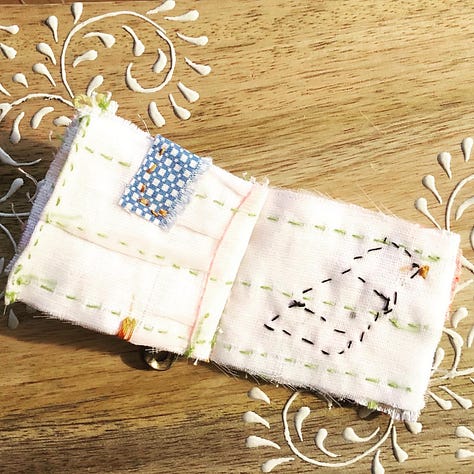
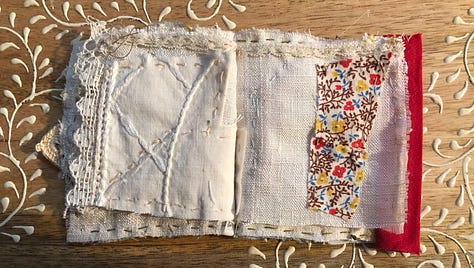
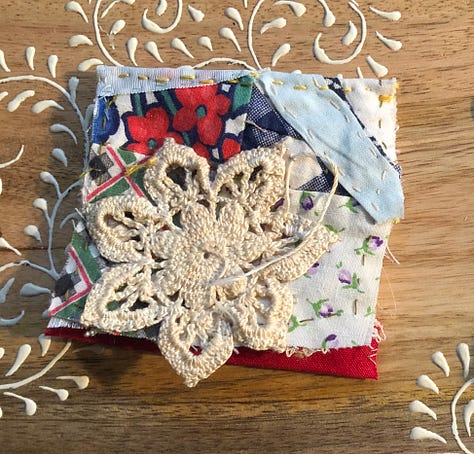
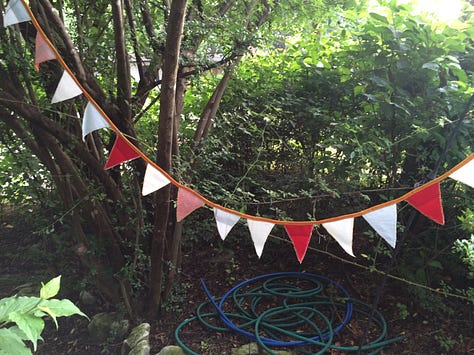
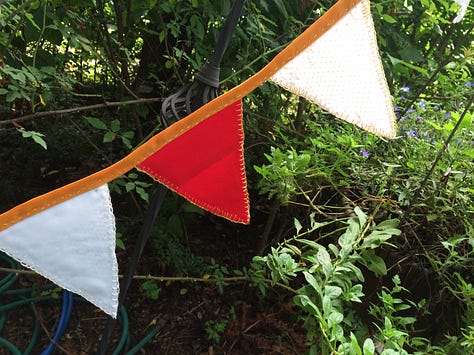
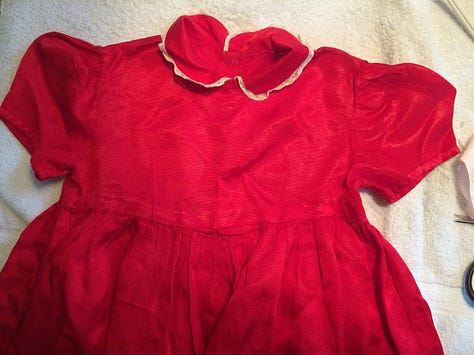
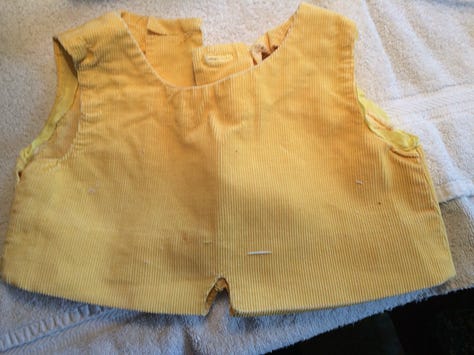
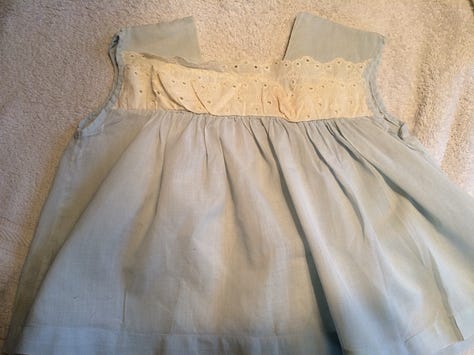
The process without a deadline
As I finish up the mending, I am contemplating how to make patches for the quilt top ( the backing is also in need of repair). I plan to rely on my box of old fabric, made up mostly of well worn baby clothes. I refuse to set myself a deadline, my grandson slept happily under the quilt before I started to mend it, as long as I pull out the pins and needles before he crawls under it, I think it will continue to work just fine.
This process reminds me that the world is a constant state of being made and destroyed and repaired again. As I fret about politics, wars and natural disasters, I can also be part of restoration and healing the world. Even if it is in a very small way.
Further evidence that it may have come from my Aunt Lucille’s house. My Uncle Wilborn worked in a furniture store for decades after they moved to town from the farm in East Texas. Because I am quick to take handmade things away from people who have misused them (lots of stories there, lol) it is likely that one of cousins gave me this quilt when they were cleaning out the house. I will need to consult the keeper of knowledge (my sister) to be sure. It is just as likely that my mom felt sorry for the quilt and bought it at a yard sale.
I considered unpicking the quilt top and re-quilting it with a proper cotton (or wool) batting. but, the tiny, firmly attached quilt stitches told me otherwise.




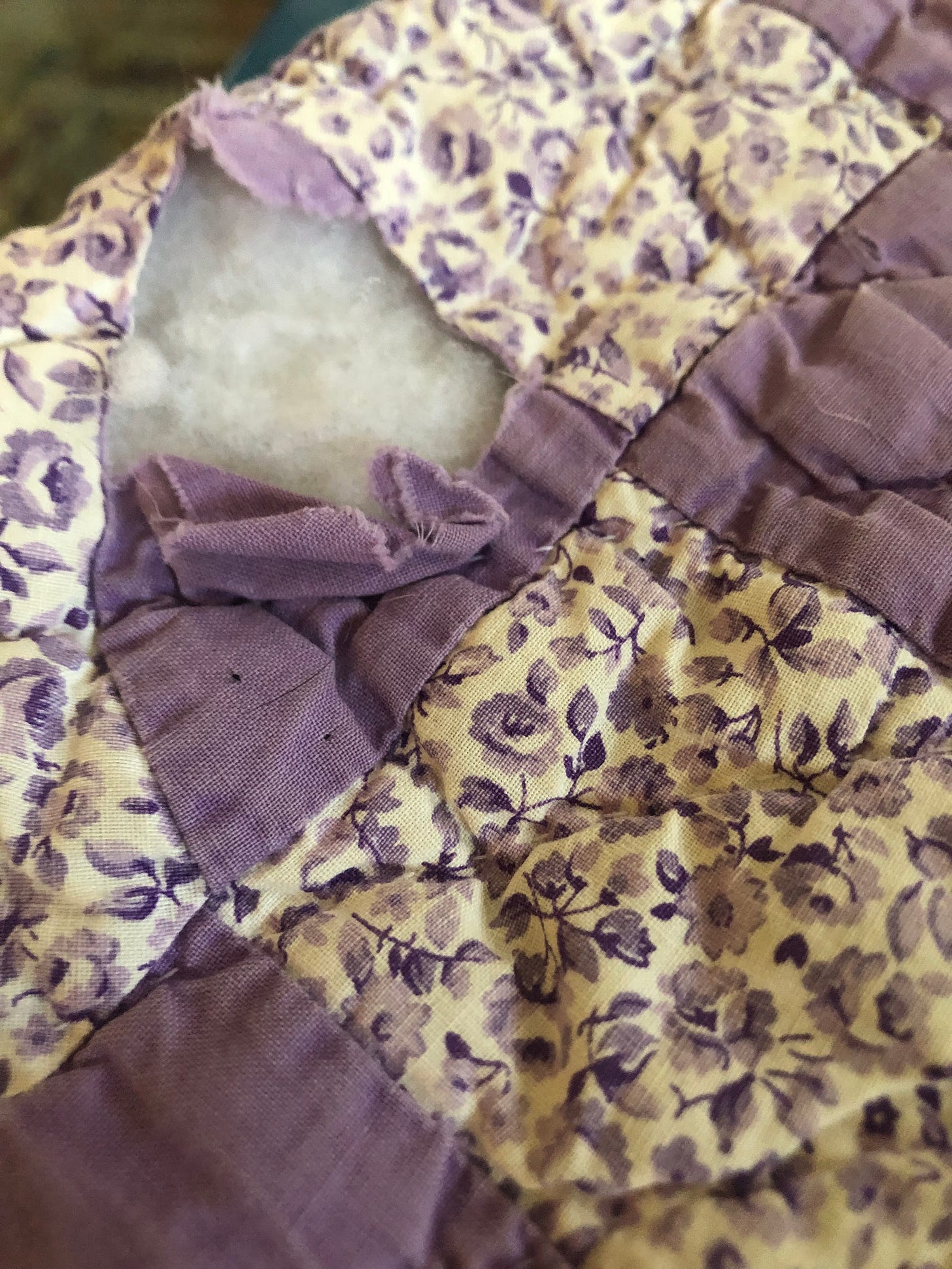
I recently repaired a quilt my mom made for me as a small child. It was my twin bed quilt for years. It was tied, not quilted, and the cotton batting clumped up without enough support. The muslin backing was ripped and stained, too. I untied it, replaced the batting and backing, quilted it on my machine, and bound it. I kept the backing as an extra layer between the top and the new batting, so the original fabric is all there. Such a satisfying re-do! I made sure to make a label with all of its details, past and present -- it's a really nice way to cap off the project.